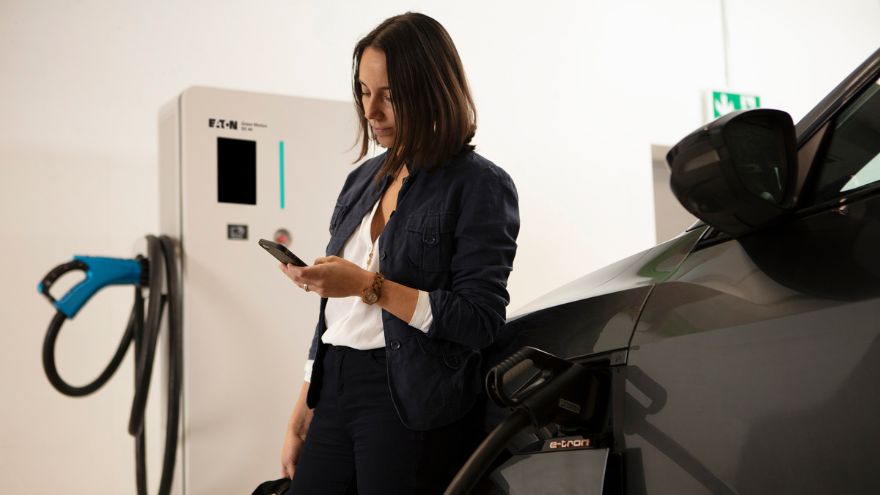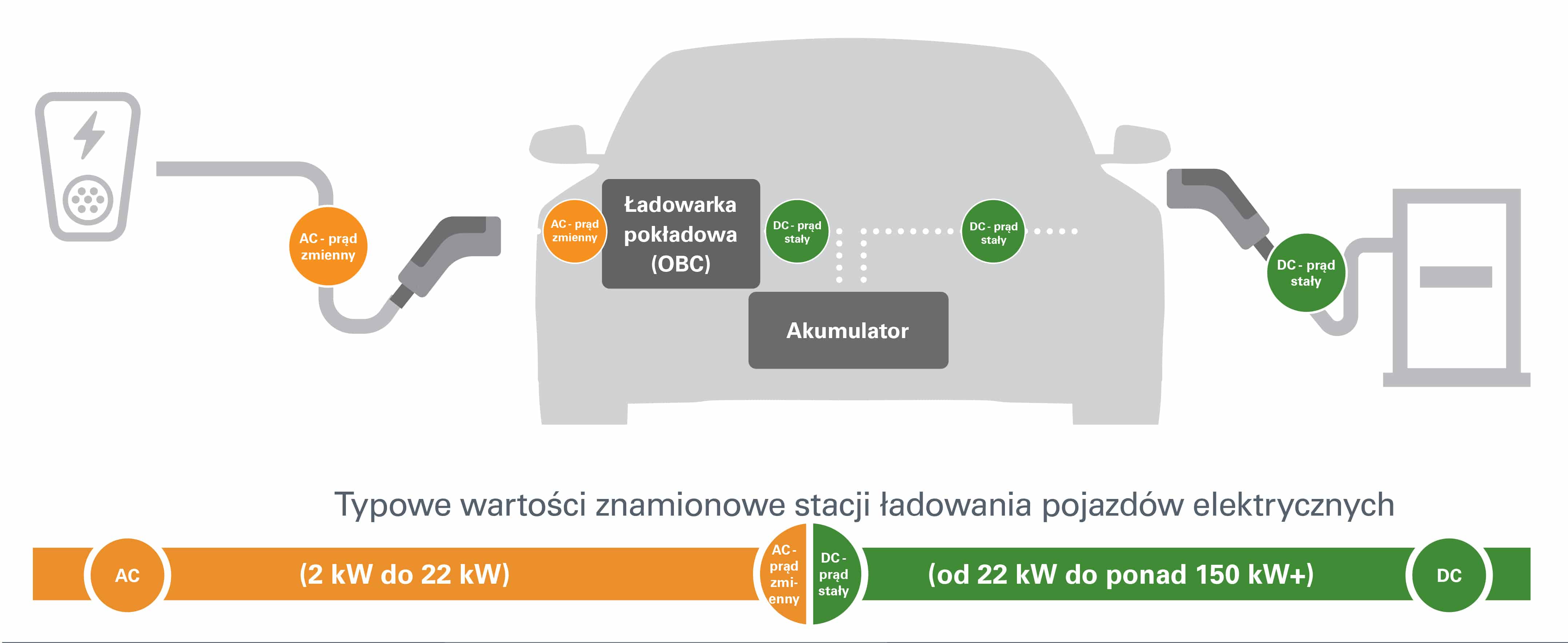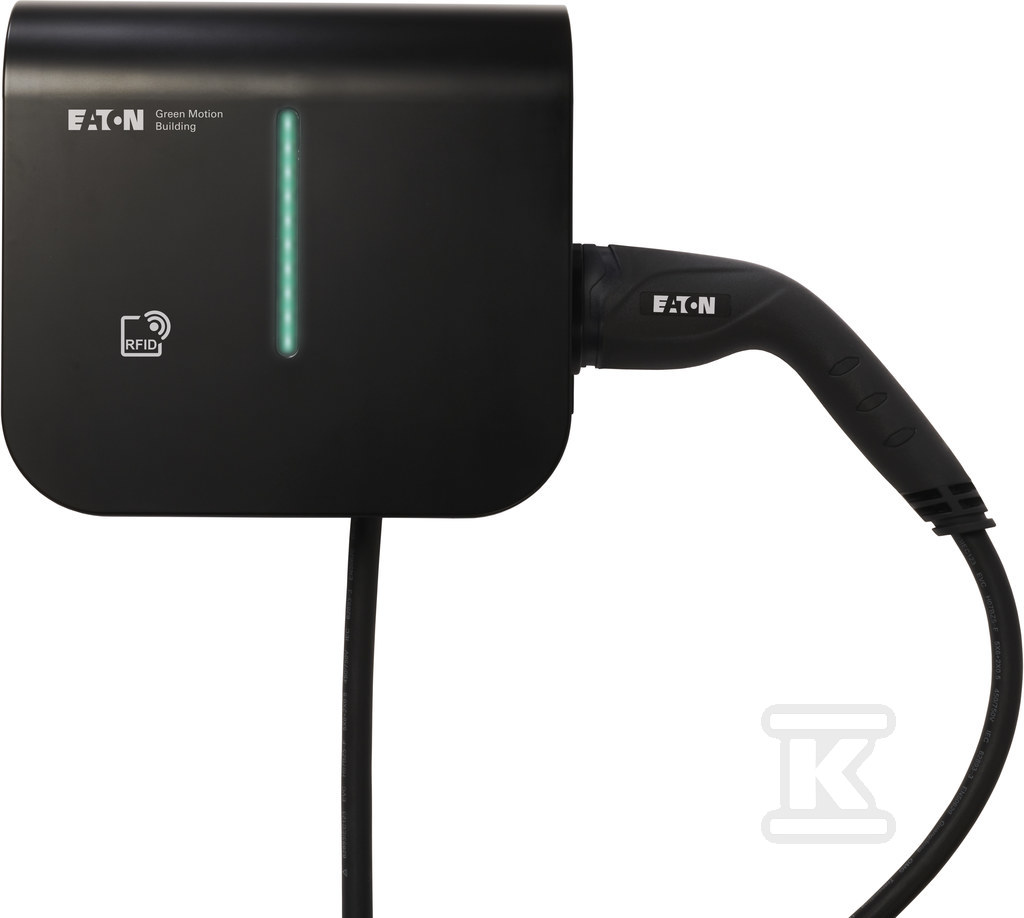Electric car chargers offer users a variety of technical solutions. Learn what to look for to maximize their potential.

Check out Eaton wallbox chargers at the Onninen wholesaler
Electric cars – the technology of the future
The European Parliament has decided to completely eliminate exhaust emissions from new cars from 2035. This means that from this year onwards, only electric vehicles will be available for purchase in Europe. Although the pace of these changes may be a challenge for some people, it is worth considering buying an electric car now. There are currently over 100,000 such vehicles on Polish roads, for which there are over 6,500 public charging stations.
How do electric vehicles operate?
Cars with internal combustion engines use fuel as a source of energy, while electric vehicles are powered by a built-in battery. Instead of refueling at a gas station, electric cars are charged via special sockets: type 1 or 2 for alternating current (AC) and CCS or CHAdeMO sockets for direct current (DC), enabling fast charging. The standard equipment of the car is a portable charger with a power of about 2.3 kW (230V AC), with the possibility of connecting to a regular home socket. However, this is not the most efficient way to charge a vehicle. For example, a full charge of the Nissan Leaf battery (with a capacity of 24 kWh) with such a device takes over 10 hours. Therefore, it is worth considering installing a home charging station.

Optimal power for your home charging station
Home charging stations come in two main types: AC (alternating current) and DC (direct current). AC stations, also known as slow stations, charge the car with alternating current, which is converted to direct current in the vehicle, which is necessary to charge the battery. DC stations, on the other hand, skip this process and charge the battery directly, which allows for the use of higher power and significantly shortens the charging time.
When selecting the power of the Eaton wallbox charger, the vehicle's battery capacity and the connection power at the charging location must be taken into account. A device that exceeds the available connection power from the power company cannot be installed, as this could trigger the protection and interrupt the power supply. Typically, home connections have a power of 10 to 15 kW, so using the full power of the 22 kW station may require an increase in the connection power from the power company or the installation of a charger with a power limit.
Eaton’s offering includes Green Motion Home and Green Motion Building AC charging stations with power outputs of up to 7.4 kW (single-phase) and up to 22 kW (three-phase), as well as 30 kW and 60 kW DC charging stations, which will be available in late 2024. All EATON AC charging stations with power outputs of up to 22 kW offer adjustable output power, which allows them to be easily adapted to any electrical installation.
Types of sockets in a home charging station
Electric cars usually have two sockets: AC for charging with alternating current and DC for fast charging with direct current. AC stations have type 1 and type 2 sockets, and DC stations have CCS or CHAdeMO. Before buying a car and a charging station, it is worth checking their compatibility to avoid problems with using adapters.

Where is the best place to place a charging station?
It is best to install the charging station where we most often park our car, whether in front of the house, in the garage or on the property. It is possible to place the device on a wall (wallbox) or as a free-standing device on a post. In the case of installation in an unfenced area, it is worth taking care of access control to the station to prevent unauthorized use.
Installing free-standing stations outdoors may also require earthworks to connect the device to the power grid. In the case of a wall-mounted station, the installer usually makes grooves in the wall to route power from the home switchboard. It is also worth installing a bumper to protect the station from accidental damage.
Charger installation
 Charger prices do not include the costs of installation and modernization of the installation. This cost may vary depending on the quality of the components or the level of safety. The installation should be carried out by a licensed electrician who will assess the condition of the existing installation and its capabilities. In older buildings, it may also be necessary to modernize the installation to make it compatible with the new charging station. In each case, the installer should carry out a thorough inspection before starting the installation.
Charger prices do not include the costs of installation and modernization of the installation. This cost may vary depending on the quality of the components or the level of safety. The installation should be carried out by a licensed electrician who will assess the condition of the existing installation and its capabilities. In older buildings, it may also be necessary to modernize the installation to make it compatible with the new charging station. In each case, the installer should carry out a thorough inspection before starting the installation.
Legal requirements for home charging stations
A home charging station must be properly secured, preferably in accordance with the manufacturer's requirements. A circuit breaker or fuse should provide protection against short circuits or overloads. The station should also be protected by a type A or B differential circuit breaker, which is worth considering when buying, because the cost of a type B differential circuit breaker is the same as the cost of the station itself. Therefore, it is worth looking for a station that only needs a type A differential circuit breaker. You should also pay attention to the cross-section of the wires. For a 22 kW station, cables with a cross-section of at least 6 mm2 are recommended to maximize its potential. It is also worth remembering that stations made available to the public (including, for example, guests) are subject to annual inspections by the Office of Technical Inspection.
Author: Bartłomiej Jaworski, Senior Product Manager at Eaton